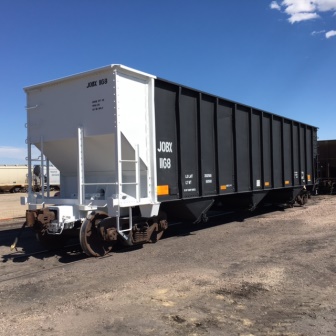We’re seeing that shippers of all transportation modes (rail, truck, barge, etc.) dealing with COVID-19 aftermath are establishing their company’s logistics plan and taking a front seat at the table of 2022 planning. It’s inspiring to be a part of fundamental focus and we’re enjoying partnering with our customers in taking hold of their logistics. We are loving our involvement in all your rail projects. The volume of phone calls and emails and inquiries looking for railcars to lease, buy and sell has been exceptional. Shipper requests for our consulting help in order to convert dated rail operations to new a more efficient rail operations mode tells us that shippers are engaged.
Businesses Are Truly Engaged in “Getting Back to Business”.
The last half of 2021 appears to be the time the business community is truly engaged in getting back to business. The COVID-19 experience (which is still evolving) has put a monkey wrench in mainstream business in 2020 and 2021 and will continue into 2022. We’re seeing automobiles not making it to the car lots due to chip shortages; railcars consistently in high demand and continuously short in supply; new railcars being ordered for builds out into Q4 2022 (at price increases that are breathtaking to absorb); people who want to work but can’t find the ideal job and people who don’t want to work because the government has provided largesse sufficient to making it counter intuitive… (that’s another article, another time!)
Despite all these challenges, businesses need to do business.
What do I mean by “Getting Back in Business”?
Collectively as an industry (and economy), one of the bigger challenges we face will be the undeniable effects of inflation. We know it’s here and will continue for some time as historically inflation takes a while to work itself out. Early on in 2021 we saw distortion in fuel prices and transportation input costs (railcars and rail rates). We saw a low demand for freight (people were changing the methods of buying and requesting deliveries), low fuel supplies, interrupted supply chains and policy decisions that punched the wind out of the sales of Canadian lumber and Keystone and other pipeline projects. Displaced workers rethought what’s important and aren’t rushing back to mediocre jobs (or even great jobs).
Take a Fresh Look At How Your Business Integrates With The New Norm.
Getting back in business means a fresh look at how your business integrates with the new norm. Albeit the new norm is still being defined. Consider the transportation system in the United States. It is largely comprised of trucks, railcars, barges and ships. In each of these categories there has been a significant impact to those operating entities that serve each transportation system. They’ve all experienced purposeful reduction in the labor force and equipment commitments to adjust to early COVID-19 impacts. Who can blame them, they have to stay in business and must make an attempt to meet internal financial goals for long term survival, right? About six to nine months later the increase in consumer demand for delivered goods and services, coupled with the resilience of Americans and a resumption of international supply and demand, made an about face requiring transportation modes to perform at an even higher level than pre-COVID-19 times. Regardless of nationality, people generally like to eat, have a roof over their heads and clothes on their backs and vehicle for personal transportation. This coupled with some government programs has released a pent-up demand catching the transportation system short on the tools and manpower necessary to meet the new demand requirements.
Plan Now For a Successful Year Ahead.
Getting back in business requires rethinking your place in the supply chain. Whatever you’re involved in, we predict that for the entirety of 2022 and possibly beyond deliveries will take a little longer. Planning for this and putting the resources you can against it will make your part of the supply chain more accurate.
Predictions…
The railcar equipment supply will continue to stay tight with little softening in the near future. New railcar builds are out to Q4 2022 and as of this publishing may be into 2023. Prices for new railcars is high and likely to stay that way for the immediate future. Railroads will place their equipment where they obtain the best returns and operating efficiencies can be gained. Private railcars will become more of a necessity to fulfill your product obligations or to simply get your product delivered.
Let’s Create Value Together.
Tealinc is a railcar lessor, railcar management and consulting firm. Contact us for an evaluation of your rail transportation situation. We’re always engaged and care about generating positive results be it a railcar lease, management of your rail assets or providing exemplary consulting results. We’re looking forward to creating true value with you.

